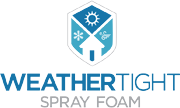Surging Energy Costs
Benefits of Spray Foam Insulation
May 2, 2016History of Insulation
July 2, 2016If you’ve been shocked by the surging energy costs, you ain’t seen nothing yet. The Energy Department has said prices for electricity are expected to rise another 13 percent by 2020. This increase comes on top of energy costs that soared 4 percent on average this year.
The Environmental Protection Agency’s rules and regulations about greenhouse gases are pushing these surging energy costs. One official from the Department of Energy reported to Congress that these rules and regulations are likely to result in wholesale electricity rate increases of 70-80% in the long run.
In California, the most stringent of the renewable portfolio standards (RPS) have been adopted. RPS mandates say there are minimum amounts of electricity that must be generated from renewable sources (wind and solar power being two of these sources) by a certain date. The RPS adopted by California requires 33 percent to be renewable by 2020.
Those who are pushing for these mandates say harmful emissions from coal plants, for example, will be significantly reduced, thereby helping our environment. They also believe these mandates will spur job growth through investment in green technology.
Unfortunately, they may be wrong. Some renewable source projects have proven to be so expensive that extreme increases in energy cost will come as a result of manufacturers trying to recoup that expense. Some research indicates wind power, for example, to be less efficient than proponents believe. This, too, will likely lead to surging energy costs.
Thus far, seven states with RPS mandates have suffered an average increase in electricity rates of 54 percent between 2001 and 2010. This is over twice the average increase seen in seven other states that do not have mandates.
What can you do to counter some of these increases? One thing is to monitor your thermostat. Set if at 68 degrees when you’re at home and even lower at night or when you’re away. Every degree you lower your thermostat leads to about two percent you save on heating.
Weatherize your doors and windows using weather stripping. Add locks to your windows to improve the seal and decrease drafts.
You also can increase the insulation in your home. Especially in the attic, the basement, and all outside walls. Selecting the right kind of insulation can also make a difference. Spray foam may be your best choice.
To assure you gain the most from the benefits of spray foam insulation, contact a professional applicator to apply it. Weathertight Spray Foam in Gilford, NH, is one of the best in the area. Contact them at 603-343-3266 to schedule an appointment to discuss their services.
